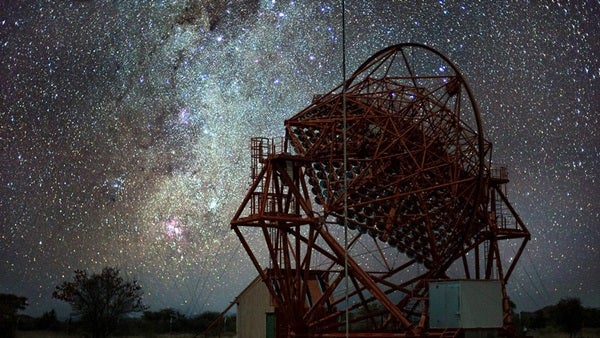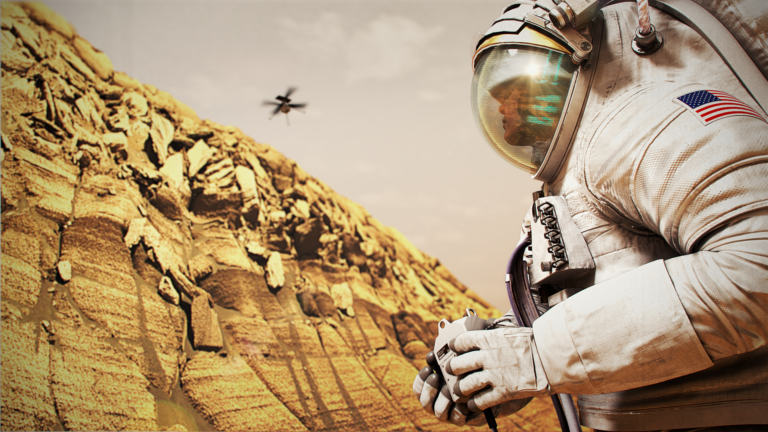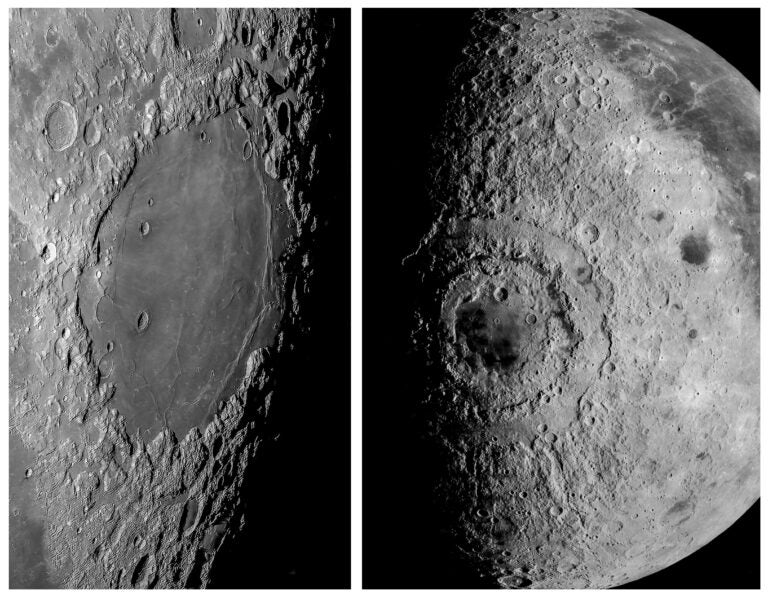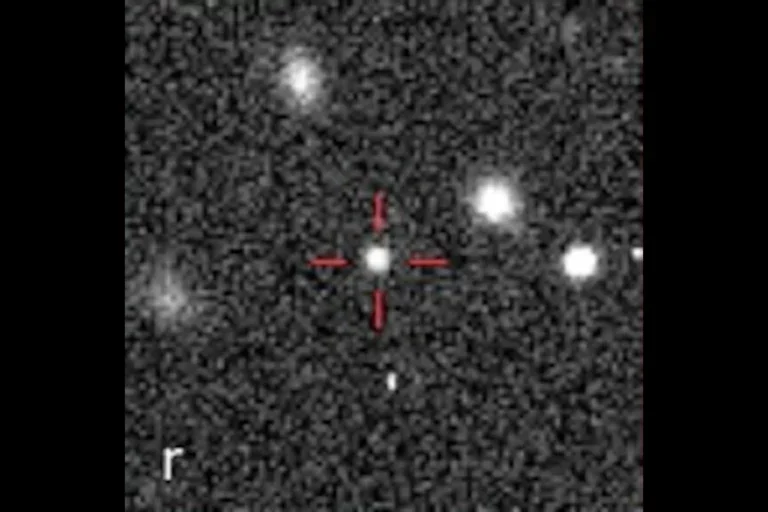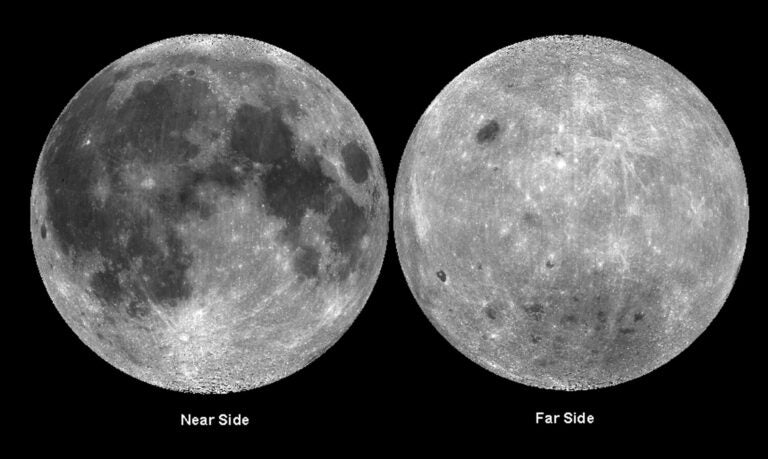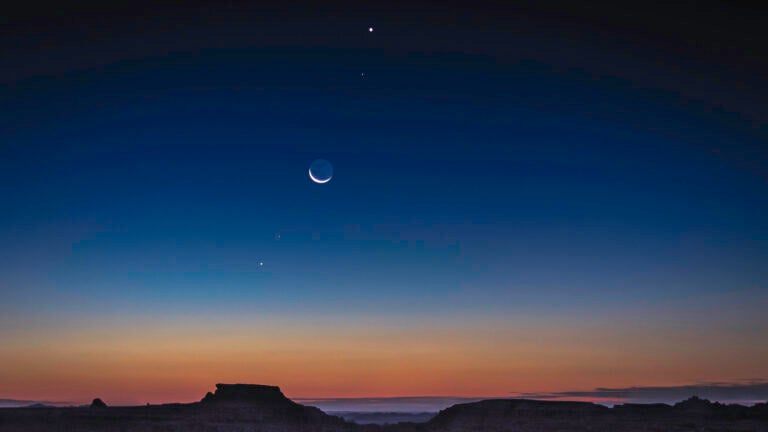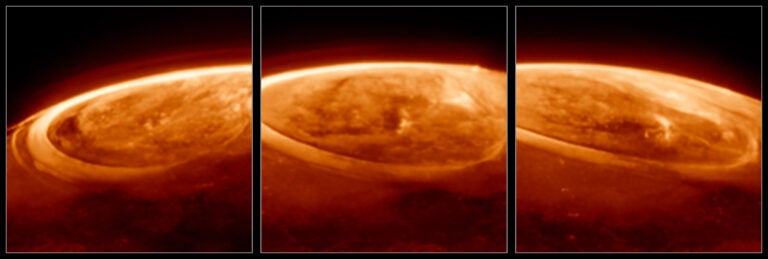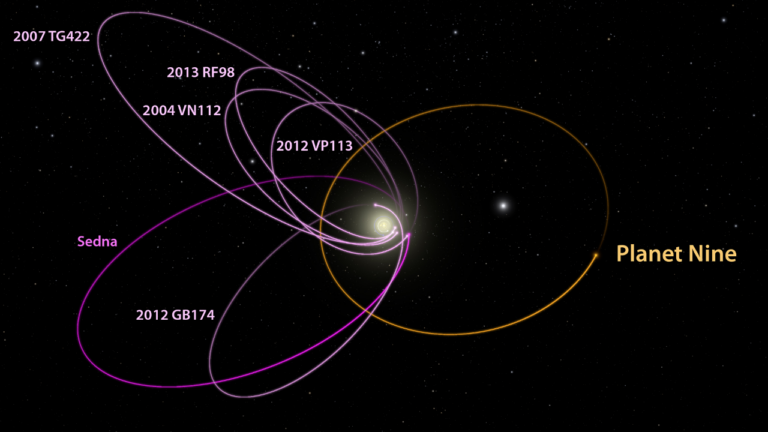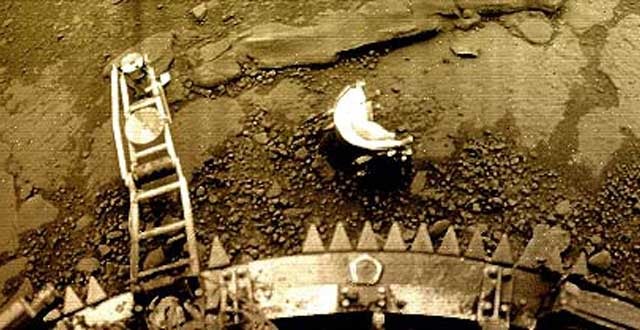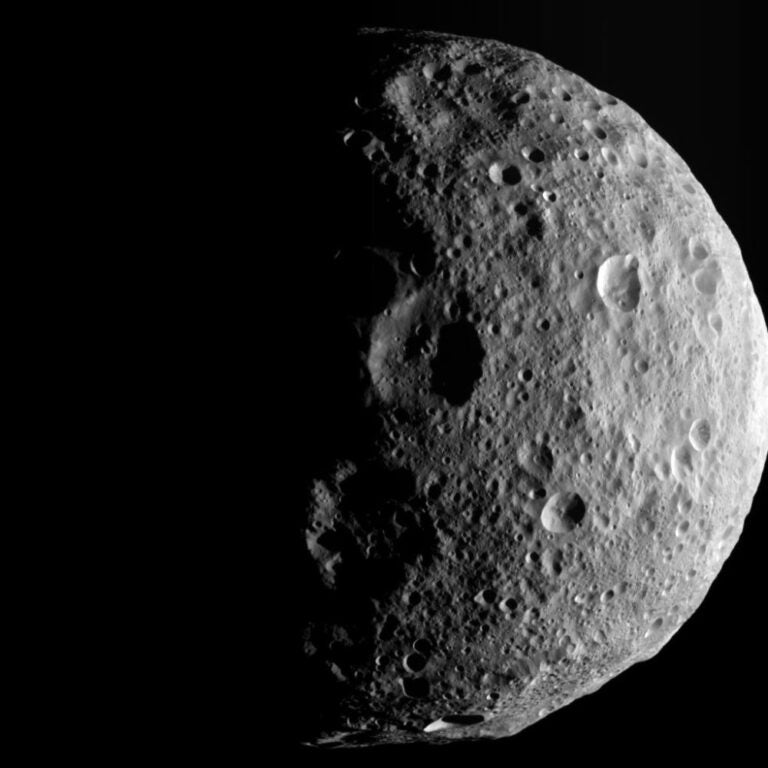Twenty minutes to totality, thousands of generations ago…
The Sun has withered to a crescent. The Moon’s umbral shadow is somewhere to the west, speeding across Earth’s surface at thousands of miles per hour. Silently, remorselessly, the Moon takes bigger and bigger bites out of the Sun’s disk.
On the ground, a group of our ancient ancestors is blissfully unaware of the events going on above them. The sky dims a little, but the sudden onset of night during the day has yet to come; the Sun remains dazzlingly bright.
These early humans have an intuitive understanding of nature, as well as the familiar changes common to their local environment. But they do not yet have explanations for the heavens above them. In a world of routine and repetition, their curiosity is limited to finding new sources of food.
As the Moon eats more than 80 percent of the Sun’s disk, their familiar world appears to be on the verge of collapse…
In the language of modern-day astronomers, the Moon and Sun have the same angular diameter. This is an interesting coincidence: It means that if the Sun is X times bigger than the Moon, it is also X times further away.
But what number is X?
Aristarchus of Samos, the brilliant ancient Greek astronomer, calculated that X was about 19. Al-Battani, one of the giants of astronomy in the Islamic world, and Tycho Brahe, the master Renaissance astronomer, came up with a similar figure. It all sounded quite reasonable, the Sun is about 19 times bigger than the Moon, and about 19 times further away.
In fact, the value of X is around 400. And that is a rather more dramatic coincidence. If the Moon were the size of a grape, the Sun would be the size of a three-story building. Yet, when we see them in the sky, they appear to have almost exactly the same diameter.
Here’s another lunar coincidence: The Moon’s orbit is tilted by about 5° to the plane in which Earth orbits the Sun. The reason why remains unclear, and the puzzle is known as the inclination problem. Astronomers’ best guess is that the Moon was gravitationally jostled by near misses with planetesimals left over from the formation of the solar system.
Combining these two cosmic coincidences has conspicuous consequences: They lead to extraordinary solar eclipses. At some time or another, every few hundred years or so, every location on Earth’s surface is given an end-of-the-world simulation (at least that’s how our ancestors interpreted the event).
Such eclipses occur when the disk of the Moon slides perfectly over the roughly equal-sized disk of the Sun. For a few brief minutes, the Moon either just manages to entirely cover the Sun (a total eclipse), or it turns the Sun into a slender ring (an annular eclipse).
Were it not for the Moon’s tilted orbit, solar eclipses would occur at every New Moon, and be routine events. As it is, however, their frequency at any particular location is spectacularly irregular. The rhythms of many astronomy-related phenomena — the rising and setting of the Sun, the ebb and flow of the tides, the changing of the seasons — are hard-wired into nature. By contrast, solar eclipses are seemingly random events; they come, literally, out of a clear blue sky.
For fun, we can ask two questions. First, are the kind of solar eclipses we experience on Earth rare within the universe? Second, have solar eclipses had any impact on the development of nature?
In a forthcoming paper in Proceedings of the International Astronomical Union No. 367, I suggest the answer to both questions is maybe. And that raises a third question: What are the implications?
Coincidence?
Let’s consider the first question. Fernando Ballesteros, an astronomer at the University of Valencia, points out the difficulty of determining whether something is a coincidence or not. He gives the example of the Titius-Bode law, which says that each planet is about twice as far from the Sun as the one before it. The law successfully predicted the discovery of Uranus and Ceres, but it broke down when Neptune was discovered in 1846.
“The fact there was this exception led us to think it was simply a numerical coincidence,” says Ballesteros. “The debate was sterile for decades until the discovery of exoplanets allowed us to investigate whether the law is present in other planetary systems. The answer turned out to be that it was, although with other numerical factors, and therefore was not a coincidence.”
So it might be that the remarkable geometry of the Earth-Moon-Sun system is simply the way things often are for rocky planets in the universe. Still, Ballesteros is not so sure — particularly as the arrangement of the three bodies is not fixed. Billions of years ago, the Moon was much closer, and thus larger in the sky, and it continues to drift away from the Earth today (at about 1.5 inches [3.8 centimeters] per year). Furthermore, the Sun is, very slowly, expanding, and this growth will accelerate in a few billion years’ time.
In other words, the perfect solar eclipses we witness on Earth are — on a cosmic scale — available for a limited time only. “Therefore my intuition tells me it is a simple coincidence, although a very amazing one,” says Ballesteros. “But who knows?”
The Dawn of Man
Our second question is whether these eclipses have had an effect on the development of nature. The quick answer is no. Solar eclipses cause short-term changes in levels of light, temperature, and humidity, and these can trigger striking reactions from plants and animals. But the environment quickly returns to its normal state at the end of totality or annularity.
Yet solar eclipses have a profound and lasting impact on humans. “I doubt if the effect of witnessing a total solar eclipse ever quite passes away,” wrote Mabel Loomis Todd, an author and world traveler, in 1894. Francis Baily, the astronomer who gave his name to Baily’s beads, expressed similar thoughts in a paper on the total solar eclipse of July 1842. “I can readily imagine that uncivilized nations may occasionally have become alarmed and terrified at such an object.” (In fact, ancient myths around the world often tell of angry gods punishing humanity or hungry animals devouring the Sun.)
In my paper, I take Baily’s speculation one step further, and wonder whether solar eclipses could have influenced the evolution of human cognition.
In general, our species developed in an environment of rhythmic regularity — even earthquakes and volcanoes are routine events in the places where they tend to happen. For evolution, however, regularity can be a trap. If novelty within the environment had remained below a certain threshold, humans might never have acquired a defining characteristic of our species: curiosity.
Solar eclipses, on the other hand, could have pumped novelty into the environment at a near optimal rate. If they occurred more routinely, they would have been less terrifying; if they occurred less frequently, there would not have been enough opportunities for them to have helped humans reach the watershed stage where we started to seek explanations for why things happen.
We began by telling stories of dragons eating the Sun. But, from an evolutionary perspective, once that watershed moment was reached, it was a relatively small leap to placing laser ranging retroreflectors on the surface of the Moon to measure its distance from the Earth within millimeters.
If this sounds like the famous scene transition in 2001: A Space Odyssey — from the spinning bone to the orbiting spacecraft — that’s because science-fiction has a habit of getting there first when it comes to highly speculative ideas. In Stanley Kubrick and Arthur C. Clarke’s version of human evolution, the development of curiosity was triggered by the monolith.
Interestingly, 2001 also illustrates the grip that alignments of the Earth-Moon-Sun system hold on our collective imagination. The film opens with a perfectly symmetrical shot of the three bodies in a straight line. According to Douglas Trumbull, a legendary filmmaker who worked on the special effects for 2001, this is important.
“It is not so much an eclipse as it is an occultation from a distance,” Trumbull explains. “Kubrick wanted the symmetry to represent a kind of cosmic alignment and significance at certain moments in the film.”
Rare Earth?
To recap: there are grounds for thinking that the type of solar eclipses we observe on Earth might be rare. In a spirit of fun speculation, we can entertain the notion that these seemingly cataclysmic events might have acted as a finely tuned pump of curiosity for early humans. This brings us to our third question, does this have wider implications?
On the current evidence, human curiosity is unique within the Universe. One of the most intriguing results of modern astronomy has been the non-detection of extraterrestrial intelligence. As the revered physicist Enrico Fermi put it, “Where is everybody?”
An argument known as the Rare Earth hypothesis proposes that we are the winners of a cosmic lottery because the development of complex life depended upon an intricate set of coincidences that may be unique to our planet. Can we extend this argument? Can we say that, having given rise to complex life, the Earth required one more special ingredient — a pump of curiosity — to help trigger the emergence of curious life?
The implication of this would be that, if the kind of eclipses we experience on Earth are rare within the Universe, human-like curiosity might also be rare.
It’s the sort of speculation that is welcomed by physicist Stephen Webb, the author of “Where Is Everybody? Seventy-Five Solutions to the Fermi Paradox and the Problem of Extraterrestrial Life“. He is keen to see a more cross-disciplinary approach to the topic.
Twenty minutes after totality, thousands of generations ago…
The Sun beats down once again. Plants and animals have fully recovered; the Moon’s umbral shadow has left behind no trace of evidence. Except for one thing: the lingering impact of terror, chaos, and confusion on the minds of our early ancestors…
Graham Jones is an astrophysicist and science communicator at timeanddate.com. Previously, he was at the University of Shiga Prefecture in Japan. He thanks Fernando Ballesteros, Douglas Trumbull and Stephen Webb for their comments for this article.




